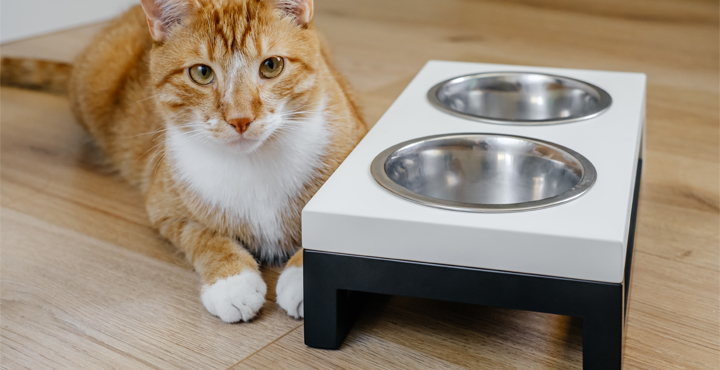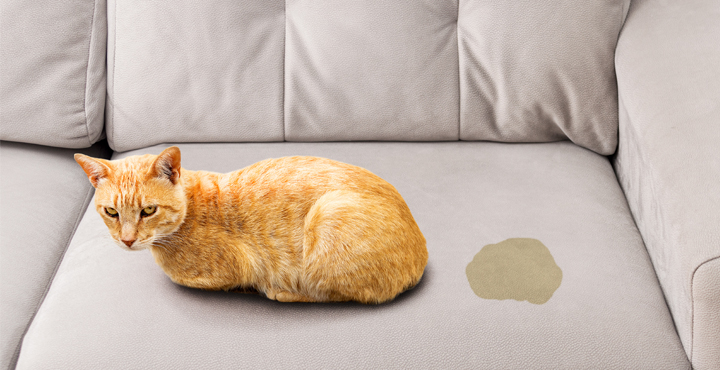
It’s likely your cat will live for around 13-17 years. To help them enjoy a long and happy life, try putting this five-step home health check in place. By doing these checks once a month, you may be able to detect a health problem early on, and do something about it.
1. Weight
Weigh your cat by holding them, standing on your bathroom scales, and subtracting your own weight from the combined total. You can also spot changes in your cat's weight by standing above them and looking for a slight ''waist'' behind their ribs, or by placing both hands around their upper waist – you should be able to feel their ribs. You can also check for pouches of tubbiness in your cat’s groin area and under their belly.
If you think your cat is overweight, ask your vet for advice. You can help by keeping all treats and table snacks off the menu, and by giving them four small meals a day, instead of two large ones. Make sure your cat gets some exercise, too, starting slowly with short playtimes and gradually building up to more.
If you think your cat is underweight – if their ribs are actually sticking out, for example – take them into the vet for a full health check.
2. Coat and skin
Check your cat's coat – it should feel wonderfully smooth from the top of their head to the tip of their tail. Part the fur near their head and along their spine to check for any flakes, scales or cuts. Treat your feline friend to our Whiskas® Healthy Coat Cat Treats, to keep them coat feeling smooth.
From there, move on to the base of their tail, their rump and their stomach. Here, you’re looking to see if any fleas have set up home. If they have, you’ll see tiny black flakes or specks. If you think your cat has fleas, speak to your vet about a suitable treatment.
Check the colour of your cat’s coat - it should be bright and glossy. If it's dull or matted, your cat might be poorly.
3. Eyes and ears
Check your cat’s eyes by gently pulling down their lower eyelids – the area you see should be pink. Check that both their pupils are of normal size. Next, stand with your cat by a window, then open and close the curtain to check how responsive their pupils are to the daylight. Also check for coloured discharge or excessive eye watering – either might mean they're picked up an infection.
Check your cat's ears – they should be clean and pink in colour, but not bright pink. Their ears should also be free of debris and nasty odours. Check for wax – especially dark wax, which may be a sign of ear mites or infection.
If you come across any problems with your cat’s eyes or ears, ask your vet for advice.
4. Teeth and gums
Check your cat’s teeth by carefully opening their mouth. Inspect all their teeth, looking for yellow or dark brown tartar build-up. If you find any, take them to the vet to have it removed. Look after your cat's teeth from home with our Whiskas® Dentabites Cat Treats, which effectively help reduce tartar build-up and give them a tasty treat.
You can help prevent tartar by asking your vet to give your cat’s mouth a regular, thorough clean. Continue the good work at home by buying a specially-designed pet toothbrush and toothpaste, and give your cat treats or dry food that are designed to fight plaque.
5. Body
Check your cat’s body for unusual lumps or bumps. Place both hands on top of their head and move them first down under their chin, then behind their front legs. Move your hands under your cat’s shoulders, down their back, over their hips, and down each of their legs. Also check their claws and the pads of their paws for cuts or cracks. If you find anything you're not happy with, take your cat to the vet.
If you're very tactile with your cat you'll soon get to know how they look when they're healthy. That way, you'll quickly spot anything that's unusual, and so help them live a happy, healthy life. Keep their joints supple so that they can carry on loving life, with our Whiskas® Healthy Joints Cat Treats and Whiskas® Immune System Cat Treats.







